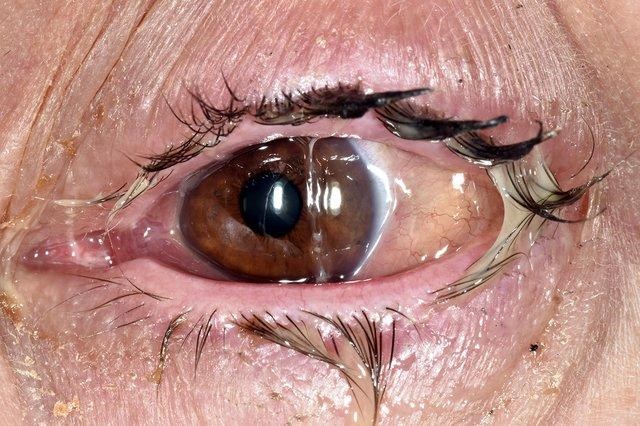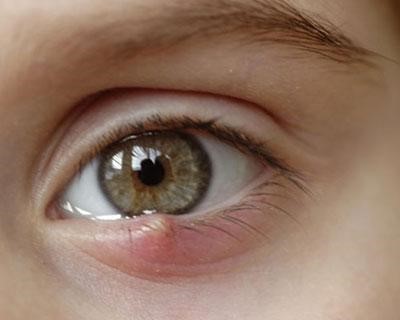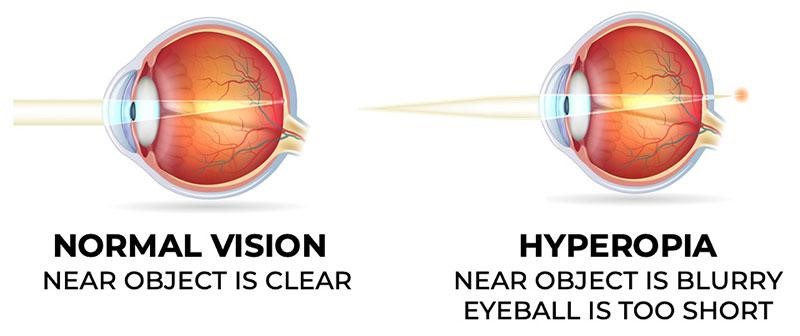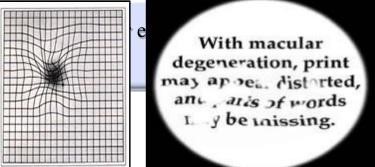Conjunctivitis

Conjunctivitis or RED EYE
- Foreign body sensation
- Watering
- stickiness
The most common types of conjunctivitis are
- - Allergic conjunctivitis
- -Bacterial conjunctivitis and
- -Viral conjunctivitis
All these types can occur in children and adults.
- Allergic conjunctivitis is non-infectious and is caused by allergy to dust, pollen, cosmetics, food and can happen repeatedly when exposed to same agent.
- In Bacterial conjunctivitis, the eyes may be sticky with yellow or green discharge throughout the day. They will feel itchy and your eyelids may become swollen.
- In Viral conjunctivitis, some sticky discharge may be present in the morning and eyes may also be very watery and the eyelids may become very swollen.
While you have conjunctivitis:
- Don’t touch and rub the eyes
- Don’t share your towels
- Don’t share your eye drops with anyone else
- Do wash your hands thoroughly before and after putting any drops in your eyes
- Do use disposable paper tissues to wipe your eyes
- Do not use make up
- Don’t use contact lenses
- Wash eye with drinkable water (NOT tap water)
Stye And Chalazion

What Is Stye?
The medical name for a stye is hordeolum is a most common type of eyelid infection. It is a small red painful lump that grows from the base of your eyelash or under the eyelid. Most stye are caused by bacterial infection.
What Is Chalazion?
Chalazion is a cyst on the eyelid. It happens when eyelid ‘s oil gland clogs up. It may start as stye.
Who Is at Risk For Chalazia Or Styes?
- ✔ Most styes usually occur for no obvious reason, although if your eyelids are itchy or rubbed a lot this may make stye more likely.
- ✔ Blepharitis or inflammation of the eyelids where they can become swollen, dry and itchy. Blepharitis can make you more prone to developing styes.
- ✔ Patients having glass power are more prone to develop stye
- ✔ Poor food habits with food with low protein content
Refractive Error
What Is Refractive Error?
A refractive error is a very common eye disorder, it occurs when the eye cannot clearly focus the images from the outside world at the back of the eye. The results of the refractive error are blurred vision, which is sometimes so severe that it causes visual impairment.
Four most common refractive errors are:
- ⮚ Myopia (Near sightedness): Difficulty in seeing distant objects clearly.
- ⮚ Hyperopia (Long sightedness): Difficulty in seeing close objects clearly.
- ⮚ Astigmatism: distorted vision resulting from an irregularly curved cornea.
- ⮚ Presbyopia: which leads to difficulty in reading/ seeing at arm’s length. It is related to ageing and almost occur universally.
Myopia(Short Sightedness)
- ❖ It is a very common eye condition that causes distant objects to appear blurred, while close objects can be seen clearly.
- ❖ In children the condition can start from 6 to 13 years, during the teenage years when the body grows rapidly myopia may become worse.
- ❖ Signs that your child may be short-sighted can include
- ✔ Needing to sit near the front of the class at school because they find it difficult to read the whiteboard
- ✔ Sitting close to the TV
- ✔ Complaining of headaches or tired eyes
- ✔ Regularly rubbing their eyes
It often runs in families and has been linked to focusing on nearby objects, such as books and computers, for long periods during childhood. Increase in Outdoor activity may retard the progress.

Treatment:
- ❖ Corrective lenses: An eye test can confirm whether you're short or long sightedness and you can be given a prescription for glasses or contact lenses to correct your vision.
- ❖ Laser eye surgery: usually done after the age of 18 years
- ❖ Artificial lens implants – where a man-made lens is permanently inserted into the eyes to help them focus correctly.
Hyperopia(Far Sightedness)
- ❖ The medical name for long-sight is hypermetropia, sometimes called hyperopia. Long sight can lead to problems with near vision and the eyes may commonly become tired. Distance vision (long sight) is good in the beginning.
- ❖ Many babies and very young children tend to be slightly long-sighted but usually grow out of this by about 3 years of age.
- ❖ Long sight can be corrected by glasses or contact lenses, or with laser eye surgery.

Astigmatism
- ❖ The main symptom of astigmatism is blurred vision. It occurs because the cornea at the front of the eye is unevenly curved.
- ❖ Astigmatism is usually present at birth. It can result from an injury, scar or operation to the eye, particularly if the corneal surface is damaged.
- ❖ It can be treated with glasses, contact lenses or surgery like any other refractive error.
Presbyopia
- ❖ Presbyopia is the gradual loss of your eyes' ability to focus on nearby objects. It's a natural, often annoying part of ageing.
- ❖ Presbyopia usually becomes noticeable in your early to mid-40s and continues to worsen until around age 65. It is caused by a hardening of the lens of your eye, which occurs with ageing. As your lens becomes less flexible, it can no longer change shape to focus on close-up images. As a result, these images appear out of focus.
- ❖ You may become aware of presbyopia when you start holding books and newspapers at arm's length to be able to read them.
Symptoms:
- ❖ Presbyopia develops gradually. You may first notice these signs and symptoms after age 40N specially in the morning and toward evening
- ✔ A tendency start holding books and newspapers at arm's length to be able to read them.
- ✔ Blurred vision at normal reading distance
- ✔ Eyestrain or headaches after reading or doing close-up work
- ❖ A basic eye exam can confirm presbyopia. You can correct the condition with eyeglasses or contact lenses. You might also consider surgery.
Squint (Strabismus)

A squint is a condition where the eyes do not line up perfectly together in the direction of looking. While one eye looks straight at the object the person is looking at, the other eye is 'off direction'. This may not always be obvious - some squints are very slight, and some are only presen2 some of the time. The eye which is 'off direction' may turn to point inwards, outwards, upwards or downwards.
When does the squint usually occur?
Some babies are born with a squint (strabismus), and some babies and children develop a squint later.
Acquired squints are sometimes caused by the eye trying to overcome a vision problem, such as short-sightedness, but in many cases the cause is unknown.
It is important to diagnose a squint (and amblyopia) as early as possible, so that treatment can be offered to allow your child's visual pathways to develop as normally as possible.
Treatment for a squint (strabismus) usually involves some or all of the following:
- ● Treating 'lazy eye' (amblyopia).
- ● Wearing glasses to correct any refractive error in either or both eyes.
- ● Strabismus surgery to correct the appearance of the squint itself. This may help to restore binocular vision.
Amblyopia (Lazy Eye)
What Is Amblyopia?
- ❖ AMBLYOPIA (often called a lazy eye) means that vision in one eye is poor because it is not used enough in early childhood and therefore doesn’t develop well.
- ❖ If refractive error is present from a very young age, lazy eye (amblyopia) can result
- ❖ The eye with less good vision does not learn to see properly because the brain ignores its signals and concentrates only on the better eye.
- ❖ Visual development in the brain occurs in the first few years of life and if this problem is not spotted until after vision has finished developing, the poorer eye will not fully develop its 'information route' into the brain, so will never see as well as the better eye.
What Are The Causes Of Amblyopia (Lazy Eye)
- ✔ Squint (deviation of eye)
- ✔ Refractive error
- ✔ Droopy eyelids: droopy eyelid can cause amblyopia if it covers enough of the eye to prevent it seeing properly.
- ✔ Cataract in a lens of an eye or a scarred cornea stops light getting to the back of the eye.
- ❖ Amblyopia is usually a correctable problem if it is treated early. Late treatment can mean that the sight problem remains permanent.
Why Is Treating Amblyopia Important?
- ❖ In amblyopia, the child does not see properly with one eye€. Even with mild amblyopia the three-dimensional or depth of vision may be affected and a good sense of distance and depth when looking at objects is missing. So a full functional vision where both the eyes see together is missing.
What Are The Treatments For Amblyopia?
- ❖ Correcting any underlying eye disorder, such as squint (strabismus), or correcting refractive errors - for example, long sight (hypermetropia) or short sight (myopia). Improvement in eyesight after being fitted with glasses for a refractive error can take 4-6 months.
- ❖ Training the amblyopic eye to work properly, so that vision can develop correctly.
Making The Affected Eye Work
- ❖ The main treatment for amblyopia is to restrict the use of the good eye. This then forces the affected eye to work. If this is done early enough in childhood, the vision will usually improve, often up to a normal level. The visual development of the affected eye catches up.
- ❖ The good eye being covered with an eye patch, forcing the 'lazy' (amblyopic) eye to see. Eye patching is also called as “occlusion”.
- ❖ The length of treatment with an eye patch is dependent on the age of the child and the severity of the amblyopia. Treatment is continued until either the vision is normal, or until no further improvement is found.
- ❖ On average, patches may be worn for about six hours per day. However, in severe cases they may have to be worn for most of the day.
- ❖ Sometimes, further patch treatment (maintenance treatment) is needed before the vision pathways in the brain are fixed and cannot be changed.
- ❖ Other treatments for amblyopia include eye drops and glasses.
- ❖ Occasionally, eye drops are used to blur the vision in the good eye instead of an eye patch. Eye drops can be useful when a child refuses to wear a patch. Once drops are put in a child's eye, the child can't change the blurring of vision; it simply wears off after time.
- ❖ Another option is to be fitted with glasses that prevent the good eye from seeing clearly. Usually, one lens of the glasses will be frosted so that it can't be seen through.
What Is The Prognosis?
- ❖ As a rule, the younger the child is treated, the quicker the improvement in vision is likely to be and the better the chance of restoring full normal vision.
- ❖ If treatment is started before the age of about 6-7 years, then it is often possible to restore normal vision.
- ❖ If treatment is started in older children, then some improvement in vision may still occur. However, full normal vision is unlikely to be achieved.
- ❖ The most common reason for a treatment failure is because the patch has not been worn correctly for long enough.
- ❖ As your child grows older, the vision pathways will become fully formed and impossible to change, so early patching is essential.
Cataract
What Is Cataract?
- ❖ A cataract is a clouding of Lens in your eye. Normally the lens is clear which helps to focus the light entering the eye. Cataracts will cause the 2ight to become cloudy and Misty.

Do I Have Cataract?
- ❖ Cataract develops very slowly.
- ❖ Once it progresses you will experience the following symptoms-
- ✔ Feel like your glasses are dirty and need cleaning, even when they don’t.
- ✔ The sight is misty and cloudy.
- ✔ You’re more sensitive to light – bright sunlight or car headlamps may glare more.
Why Have I Developed Cataract?
- ❖ AGE - Most people develop cataract after the age of 65 year, some may develop early in their 40’s and 50’s.
- ❖ Conditions where cataract develop early are
- Diabetes
- Medications like steroids
- High myopia.
- Injury
What Can Be Done About Cataracts?
- ❖ Cataract can be removed by surgery.
- ❖ It removes your cloudy lens and replaced it with the artificial lens and will not need to be changed for the rest of your life.
- ❖ There isn’t any drops or medicine that can remove cataracts – surgery is the only way to treat them.
When Should I Have My Cataract Surgery?
- ❖ Cataract surgery can be done at any stage you don’t have to wait for it to ripen.
Glaucoma
What Is Glaucoma?
- ❖ It is an eye condition where your optic nerve is damaged by the pressure of the fluid inside the eye. The eye pressure is known as “Intra-ocular pressure”. Its normal range is 10-21 mmHg (stands for millimetres of mercury measurement used for eye pressure).
- ❖ This eye pressure can damage the optic nerve, which is very important for sight, as it is the pathway for the signals from your retina, light sensiti2e cells at the back of your eye to the brain, this pathway allows you to see the world around you.
Vision Damage In Glaucoma

There is NORMAL VISION


There is TUNNEL VISION
What Is The Risk Of Getting Glaucoma?
- ❖ Age: glaucoma is more common as you get older, it increases more after the age of 75.
- ❖ Your family history: you are at a higher risk of developing glaucoma if you haves’ close blood relative (parent, brother or sister) with glaucoma.
- ❖ Your eye sight prescription: being short-sighted can increase the risk of open angle and closed angle glaucoma is more common in people who are long sighted.
- ❖ Having certain medical conditions, such as diabetes and high blood pressure can increase the risk of glaucoma
- ❖ Long term steroid use can also increase the risk of glaucoma.
- ❖ Injury to the eye increases the risk of glaucoma.
Screen for glaucoma if you are under these high-risk categories and have a regular follow up with your eye doctor.
Will I Have Any Symptoms?
- ❖ It doesn’t cause any symptoms; you may not notice any difference in your vision as glaucoma affects your peripheral vision (side vision) but your eye sight is being damaged.
- ❖ Because you may not notice a problem until your glaucoma is advanced, it’s important to have regular eye tests after the age of 40 as this is the only way to know if you have it. The earlier glaucoma is picked up and treated, the more your eye is protected.
- ❖ Without treatment your field of vision becomes very narrow and it can appear as if you are looking through a tunnel, and finally central vision may be affected too if left untreated leading to complete blindness. Unfortunately, once the sight loss occurs, it can’t be reversed.
- ❖ So, it is really important that glaucoma is picked up and treated early to prevent optic nerve damage.
What Is The Treatment For Glaucoma?
- ❖ Treatment to lower your pressure usually starts with drops, and for most people with glaucoma, this is all the treatment they will ever need. But these drops will need to be taken long term or for life.
- ❖ You will have monitored your eye pressure at regular check-ups with the eye doctor to make sure the drops are working.
- ❖ Instilling the drops will not cause any change in your sight, so it can be difficult to understand why you need to instil them every day. Your drops are preventing any future damage to your sight so it’s very important to keep taking them.
Surgery: In a very small number of people with glaucoma, eye drops are not successful in keeping the eye pressure stable. In these cases, surgery may be an option.
Congenital glaucoma: Congenital glaucoma is a rare form where a baby is born with glaucoma because their drainage system didn’t develop properly before birth.
Age Related Macular Degeneration
What Is Age-Related Macular Degeneration?
- ❖ ARMD affects a tiny part of the retina at the back of your eye, called the macula. It leads to problems with your central vision. It doesn’t cause pain, and doesn’t lead to the total loss of sight.
- ❖ ARMD affects the vision you use when you’re looking straight at something, for example when you’re watching television or reading.
- ❖ Your central vision can become distorted or blurry, and over time, a blank patch may appear in the centre of your vision.

Why Have I Developed Armd?
- ❖ The exact cause for ARMD is not known
- ❖ Your age: it develops as people grow older and while it’s most often seen in those aged over 65, it can also develop in people who are in their forties and fifties.
- ❖ Your genes: certain genes have been found which seem to be linked to the development of ARMD in some people, not all AMD is thought to be inherited.
- ❖ Smoking: smoking greatly increases your risk of developing ARMD – you can reduce this risk if you stop smoking.
- ❖ Sunlight:some studies have suggested that exposure to high levels of sunlight (particularly the UV light contained in sunlight) throughout your life may increase your risk of developing ARMD.
- ❖ What you eat: A well balanced diet may decrease the risk of developing ARMD.
- ❖ Unfortunately, because the exact cause of AMD is not known, you may develop ARMD even if you don’t have any of these risk factors.
What Are The Symptoms And When Should I Seek Help?
- ✔ Straight lines start to look wavy or distorted.
- ✔ Your vision isn’t as clear as it used to be
What Is The Treatment For Armd?
- ❖ Unfortunately, at the moment there is no way to treat dry AMD.
- ❖ There’s some evidence that high doses of vitamin A, C, E, the minerals zinc and copper and the micro nutrient lutein when taken together may help slow down the progression.
- ❖ A balanced diet with plenty of fresh fruit and vegetables is good for your general health and may also help your eye health.
Diabetes And Eye Disease
How Can Diabetes Affect My Vision?
- ❖ The changes in blood sugar levels caused by diabetes can affect the lens inside your eye, especially when your diabetes isn’t controlled.
- ❖ It can cause the lens in your eye to become cloudy.
- ❖ This condition is known as a cataract.
- ❖ If you have diabetes, you’re more likely to develop a cataract, and at an earlier age too, when compared to people without diabetes.
- ❖ When diabetes affects the network of blood vessels supplying the retina at the back of the eye, this is called diabetic retinopathy.
- ❖ Diabetes can cause the blood vessels to become blocked, to leak or to grow incorrectly.
How Can I Reduce The Risks?
- ❖ Good control of your blood sugar levels, blood pressure and cholesterol reduce the risk of diabetes-related sight loss./li>
- ❖ Always go to your annual diabetic eye screening. Don’t wait until your vision has become worse to have an eye test.
- ❖ Why are regular eye examinations and screening tests so important?
- ❖ Most of the eye problems caused by diabetes can be treated, but it is vital that these problems are picked up as soon as possible, as any treatment you’re given is more effective when given early.
- ❖ This regular annual screening is essential as you may not be aware that there is anything wrong with your eyes until it’s too late. The earlier the treatment, the more effective it is.
❖ What can be done about diabetic retinopathy?
- ❖ If your sight is at risk from retinopathy and it has been picked up early enough, you will be given laser treatment. It is important to remember that laser aims to prevent your vision from getting worse. It cannot make your vision better. However, if you do not have laser treatment, you may end up losing a lot more of your sight.
Prevention: Diabetic retinopathy can be prevented by controlling and maintaining your blood sugar levels and having a regular eye check-up.
Dry Eye
What Is Dry Eye?
- ❖ Dry eye is an eye condition caused by a problem with tears. Dry eye can make your eye feel uncomfortable, red, scratchy and irritated.
- ❖ It can make your eyesight blurry for short periods of time, but the blurriness will go away on its own or improve when you blink.
- ❖ Sometimes dry eye can make it feel like you’ve got something in your eye such as an eyelash or a piece of grit, even when there is nothing there.
- ❖ Your eyes may water more than usual.
Why Have I Developed Dry Eye?
- ❖ You don’t produce enough tears
- ❖ Your tears aren’t of the right quality
- ❖ Your tears aren’t spread across the front of your eye properly.
- Dry eye is usually more common as people get older. As we age, our eyelids aren’t as good at spreading tears each time we blink. The various glands in our eyes that produce tears may also become less effective. Essentially, the quality of something known as your tear film gets worse.
What Are The Causes Of Dry Eye?
- ❖ Blepharitis: inflammation of the eyelids and can sometimes be caused by a bacterial infection.
- ❖ Medication If you’re taking certain drugs, such as antihistamines, antidepressants, pain medications and oral contraceptives, you may develop dry eye symptoms.
- ❖ Contact lenses
- ❖ Other health conditions: Autoimmune and systemic diseases.
How Is Dry Eye Diagnosed?
- ❖ There are a number of tests which your eye care professional may want to do to work out if you have dry eye and if you do, how dry your eyes are.
- ❖ These tests help them decide how to treat your eyes.
- ❖ The tests also check how many tears you produce and detect any areas on the front of your eye that don’t have enough tears.
What Is The Treatment For Dry Eye?
- ❖ Once the ophthalmologist, has confirmed you have dry eye, will discuss what can be done to help you. You cannot cure dry eye but there are some treatments that can help your eyes feel more comfortable.
There are three main ways to help your dry eye:
- ❖ Making the most of your natural tears
- ❖ Using artificial tears (eye drops)
- ❖ Reducing the draining away of the tears
- ❖ Many people find that their dry eye is worse when they’re reading or using a computer.
- ❖ This is because you blink less when you are doing a task like this, giving the tears more chance to evaporate.
- ❖ You can try to blink more when you’re doing these tasks, or use eye drops before you read, watch TV or use a computer, as this may help to keep your eyes comfortable.
- ❖ Warm compresses can help.
- ❖ Most people with dry eye need to use some form of eye drops, also known as artificial tears.
- ❖ Eye drops aim to supplement and replace your natural tears and make the eye more comfortable.
- ❖ They can also prevent any damage to the front of your eye, which can happen if the eye is dry for a long time.
Is There Anything I Can Do To Help With Dry Eye?
- ❖ Use your prescribed eye drops regularly. Finding eye drops that work for you can make a huge difference.
- ❖ Adjust your environment. Lowering temperature and using a humidifier may help, as air conditioning can worsen your symptoms.
- ❖ Avoid dusty, windy and smoky areas
- ❖ Take rest periods and remember to blink often when you are using the computer, watching television and reading.
- ❖ Try to have a healthy balanced diet, with flax seed as well as foods containing omega 3 and 6, such as oily fish, nuts, seeds, eggs, green leafy vegetables, etc.
- ❖ Avoid using eye make-up when there’s infection or inflammation present.
- ❖ If you wear contact lenses, have regular eye follow-ups. You may need a break from wearing contact lenses if your eyes are dry, or explore different types of lenses which may be more suitable for dry eye.
- Although there is no cure for dry eye, most people will learn how to manage their dry eye so that it doesn’t have too much impact on their everyday lives.
Posterior Vitreous Detachment
What Is Posterior Vitreous Detachment?
- ❖ Your eye is filled with a clear gel called the vitreous. The vitreous helps to keep your eye’s shape.
- ❖ As you age, it is common for the vitreous to become waterier and less like a gel.
- ❖ When the vitreous gets too soft, it loses its shape and comes away from the retina and shrinks in towards the centre of your eye.
- ❖ This is not a problem as we do not need the vitreous attached to the retina in order to see well.
- ❖ PVD is a natural change in the eye and is not a sign of another eye health problem.
- ❖ This isn’t painful and it doesn’t cause sight loss, but you may have symptoms such as seeing floaters (small dark spots or shapes) and flashing lights.
- ❖ These symptoms will calm down with time and as your brain learns to ignore them.
- ❖ With time, you should be able to see just as well as you could before your PVD started.
What Are The Symptoms Of Pvd?
- ❖ Floaters for the first time or more floaters than you had before. The new floaters are usually noticed suddenly. There may be lots of new floaters or commonly a large cobweb-like floater
- ❖ Flashes of light in your vision, usually like brief ‘streaks’ of light in your side (peripheral) vision
- ❖ Blurred vision.
Is There Any Treatment For Pvd?
- ❖ Treatment for PVD is not needed.
- ❖ The symptoms of PVD are very similar to those of a different eye condition called retinal detachment, which needs prompt treatment to stop you losing part or all of the sight in your eye.
- ❖ Because of this, it’s important to have your eyes examined by an ophthalmologist within 24 hours of noticing any new symptoms so that an accurate diagnosis can be made.
Reference
All this information was taken from Bharti Eye Foundation
